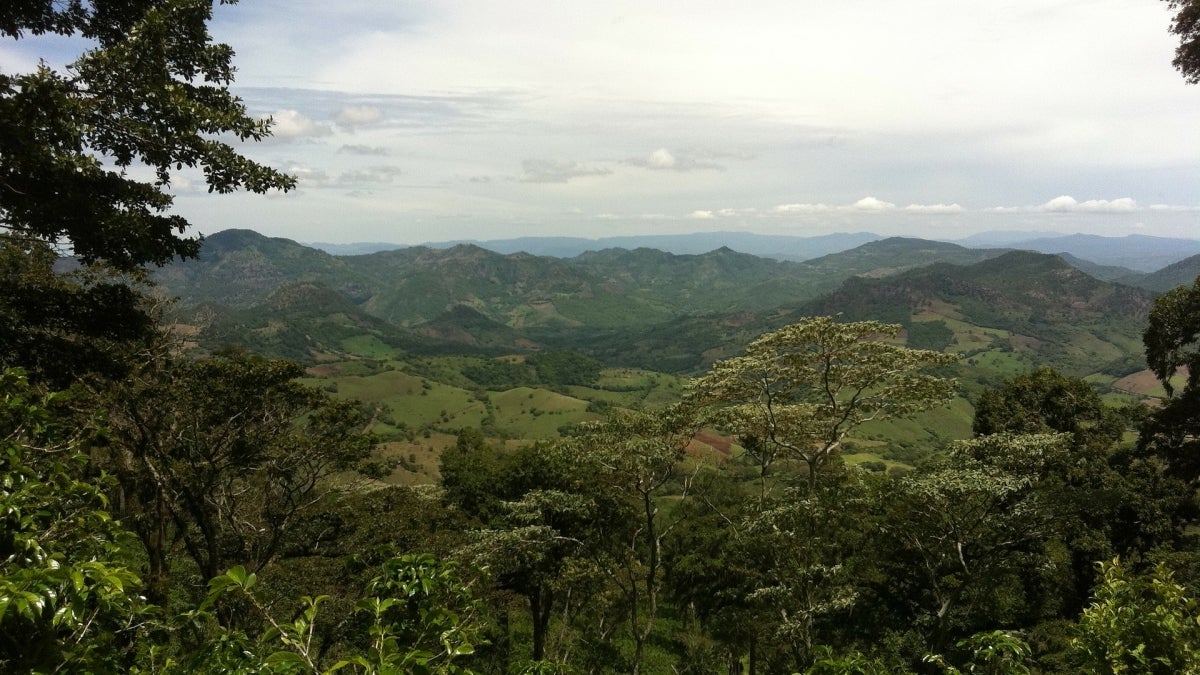ASU students meet with wildlife conservationists around the world — from Mesa

About 12 years ago in Russia, wildlife conservation biologist Adam Stein was involved with projects on the Oriental stork.
A Russian colleague had been working on how to save the species — then numbering only about 3,000 — throughout its entire habitat from Siberia down into Manchuria, Korea and Japan. Stein observed firsthand the experience of working across borders and languages, and dealing with capacity issues and proprietary data to save a species that now numbers about 7,000.
Now, during a time where many things have changed, Stein has taken the international conservation biology class offered at Arizona State University’s College of Integrative Sciences and Arts from classroom lectures to weekly meetings with researchers from Siberia to the Solomon Islands, Nicaragua and Tanzania.
“It's been a great opportunity for the students just to really see how these different cultures work, to get conversations with those people on the ground,” Stein said.
The combination of being isolated with new meeting technology offered a fresh opportunity to recast the class.
“We can't necessarily go to the Solomons for the week or to Tanzania for the week,” Stein said. “And we can't cram all that into the semester. And so what better way than to just take this technology and say, this is the best way to teach this class instead of having a Westerner sit up here and talk about, you know, this is how it goes.”
The course has been offered at ASU for some time, but it’s the first time Stein has taught it. Students learn about wildlife around the world, including biogeography, biodiversity, conservation topics and the complexity of conserving wildlife in both developed and developing nations.
Stein has traveled around the world as a conservation biologist and met scores of people in the field.
“I've met a lot of different individuals at different levels of conservation and have been able to see ecosystems and conservation issues firsthand,” he said. “And when I was offered to teach this course, I said, this is a great opportunity for me to touch base with all of these colleagues from around the world. And instead of me telling the story that I've witnessed, have them firsthand tell these stories and tie it into an overall picture of how conservation works on an international level.”
Conservation biology is a rigorous science that looks at what is needed to maintain populations. What is the amount of species needed for enough genetic variability? How do we maintain that population? How do we keep that minimal viable population going? What's the dynamic area that's needed to support those organisms working within the matrix of human interactions? The international component talks about why it’s a global problem.
Stein kicked off the semester with locals who live on the edge of one of the last large wildernesses in Central America in Nicaragua, a 2,500-square-kilometer ecosystem home to the last big populations of jaguars and other large mammals. It’s vastly important for the connectivity of wildlife species that make their way from Mexico through to South America. Without that linkage, two continents are broken apart.
“It has ramifications beyond just its own borders about the connectivity of these ecosystems, and it's under threat,” Stein said. “We see that it's being undermined in the last five to 10 years. It's being degraded by deforestation, by intruders into this environment. And Nicaragua is a very poor country and doesn't invest a lot of resources into this conservation."
Initially people might assume these intruders are impoverished residents looking for opportunities, Stein said — but in fact, there are reports that the government is the driver behind it, seizing land and giving concessions to companies such as large cattle operations.
"What I think it did for the students was it kind of opened their eyes to the government may be the problem here, and why can't the people do something about that?" he said.
"These are the questions that are generated by the students ... and the feedback I've heard has really, you know, shown the complicated issues that come with that."
Top photo of Nicaragua courtesy of Pixabay.com
More Science and technology

Will this antibiotic work? ASU scientists develop rapid bacterial tests
Bacteria multiply at an astonishing rate, sometimes doubling in number in under four minutes. Imagine a doctor faced with a patient showing severe signs of infection. As they sift through test…

ASU researcher part of team discovering ways to fight drug-resistant bacteria
A new study published in the Science Advances journal featuring Arizona State University researchers has found vulnerabilities in certain strains of bacteria that are antibiotic resistant, just…

ASU student researchers get early, hands-on experience in engineering research
Using computer science to aid endangered species reintroduction, enhance software engineering education and improve semiconductor material performance are just some of the ways Arizona State…